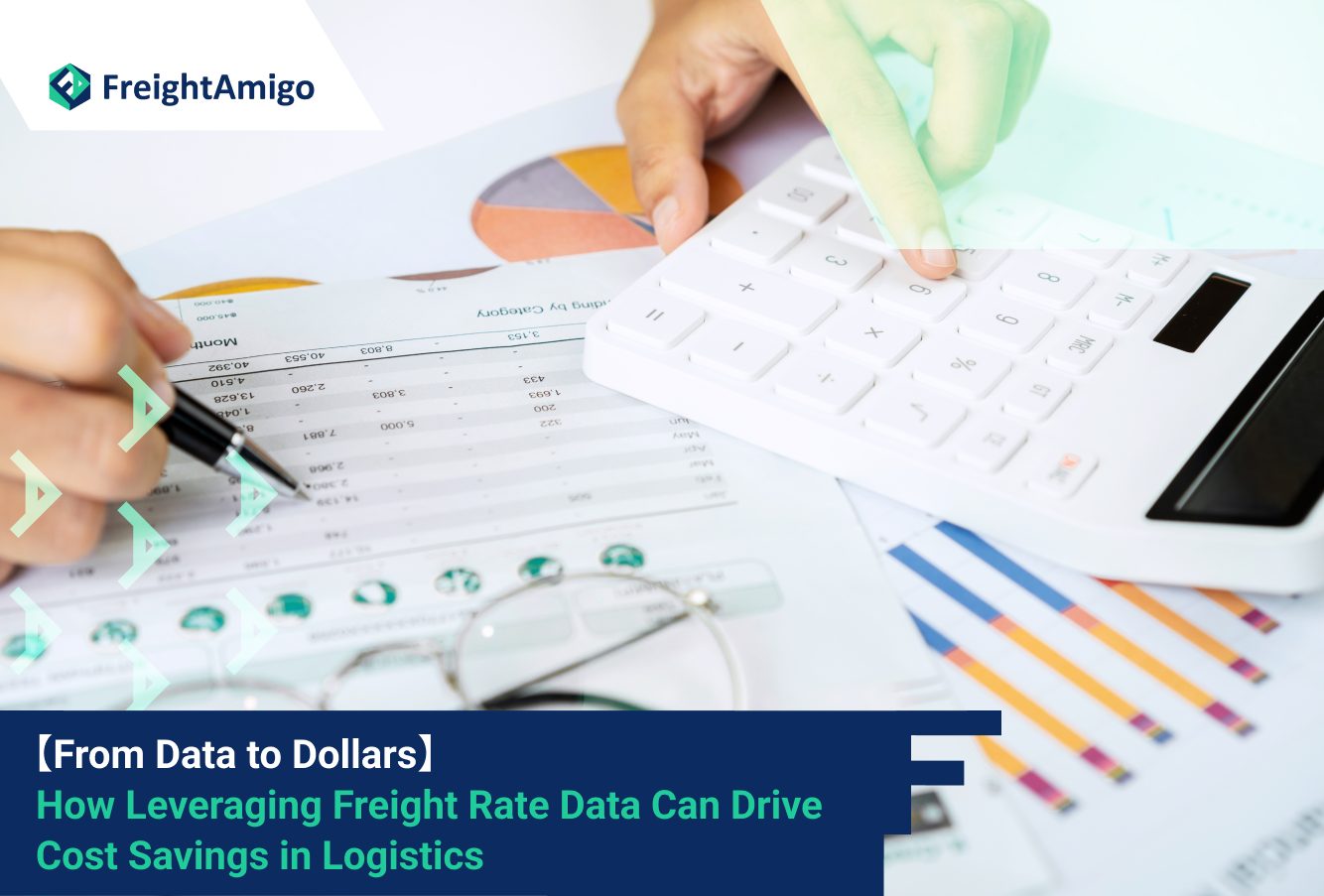In today’s fast-paced world of logistics, every penny counts. From the moment a shipment is picked up to the time it reaches its destination, companies are constantly looking for ways to minimize costs and maximize efficiency. One of the most powerful tools in their arsenal is freight rate data.
Freight rate data refers to the information about the cost of shipping goods from one location to another. This data includes factors such as distance, weight, mode of transport, and any additional fees or surcharges. By analyzing this data, companies can gain valuable insights into their shipping costs and make informed decisions to drive cost savings.
Author Name: Aiden Ng – Marketing Analyst at FreightAmigo
Want to compare the best Express, Air Freight, Sea Freight, Rail Freight & Trucking rates so as to have better control on cost?
The Role of Data in Logistics Cost Management
Data is the lifeblood of logistics cost management. It provides companies with the necessary information to identify areas of inefficiency, streamline operations, and negotiate better rates with carriers. Without accurate and up-to-date data, companies would be flying blind, making decisions based on guesswork rather than hard facts.
One of the key benefits of using freight rate data is the ability to benchmark costs against industry standards. By comparing their rates to those of their competitors, companies can identify areas where they may be overpaying and take steps to negotiate better deals. This not only helps drive cost savings but also ensures that companies remain competitive in the marketplace.
Benefits of Leveraging Freight Rate Data
There are several benefits to leveraging freight rate data in logistics cost management. Firstly, it allows companies to identify cost-saving opportunities. By analyzing historical data, companies can identify patterns and trends that can help them optimize their shipping routes, consolidate shipments, and reduce unnecessary expenses. This can lead to significant cost savings in the long run.
Secondly, freight rate data can help companies make informed decisions about carriers and service providers. By comparing rates and performance metrics, companies can select the most cost-effective and reliable partners for their shipping needs. This not only helps drive cost savings but also ensures that shipments are delivered on time and in good condition.
Lastly, leveraging freight rate data can help companies identify areas of inefficiency in their supply chain. By analyzing data on transit times, delivery performance, and other key metrics, companies can identify bottlenecks and areas for improvement. This can lead to streamlined operations, faster delivery times, and ultimately, a better customer experience.
Using Freight Rate Data to Optimize Shipping Costs
Once companies have access to freight rate data, they can start using it to optimize their shipping costs. One of the first steps is to analyze historical data to identify cost-saving opportunities. This may involve identifying patterns in shipping routes, consolidating shipments to reduce costs, or renegotiating rates with carriers.
Another way to leverage freight rate data is to use it for real-time decision-making. By integrating data analytics tools with their logistics systems, companies can access up-to-date information on rates, carrier performance, and other relevant factors. This allows them to make informed decisions about shipping methods, carriers, and routes on the fly, optimizing costs and ensuring timely delivery.
Furthermore, companies can use freight rate data to implement dynamic pricing strategies. By analyzing market trends and demand patterns, companies can adjust their rates in real-time to maximize profitability. This can be particularly useful in industries with fluctuating demand, such as e-commerce or seasonal goods.
Tools and Technologies for Managing and Visualizing Freight Rate Data
To effectively leverage freight rate data, companies need the right tools and technologies. There are several software solutions available that can help companies manage and visualize their data, making it easier to identify cost-saving opportunities and make informed decisions.
One such tool is a transportation management system (TMS), which allows companies to centralize and automate their shipping processes. A TMS can integrate with carriers’ systems to provide real-time rate quotes, track shipments, and generate reports on shipping costs. This helps companies streamline their operations, reduce manual errors, and make data-driven decisions.
Another useful technology is data visualization software. This allows companies to transform their freight rate data into visual representations, such as charts and graphs. By visualizing their data, companies can quickly identify trends, patterns, and outliers, making it easier to spot cost-saving opportunities and make informed decisions.
Conclusion and Future Trends in Freight Rate Data Analysis
In conclusion, leveraging freight rate data is essential for driving cost savings in logistics. By analyzing historical data, companies can identify cost-saving opportunities, benchmark their rates against industry standards, and make informed decisions about carriers and service providers. With the right tools and technologies, companies can optimize their shipping costs in real-time, implement dynamic pricing strategies, and streamline their operations.
Looking ahead, the future of freight rate data analysis is promising. As technology continues to advance, companies can expect more sophisticated tools and algorithms for analyzing and visualizing their data. Artificial intelligence and machine learning will play an increasingly important role in identifying cost-saving opportunities and optimizing shipping routes. Companies that embrace these technologies and leverage freight rate data will be well-positioned to drive cost savings and remain competitive in the ever-evolving world of logistics.
There are different options for cargo transportation. If you want to choose the most convenient and suitable solution, it is best to have the full support of logistics experts! If you are planning to ship goods overseas, please go to the FreightAmigo page for inquiries.
===
Read More:
【Driving Towards a Sustainable Future】 Exploring Policy Frameworks for Low-Carbon Logistics
The Art of Order Fulfillment: Strategies for Success in an E-commerce World
【Technology-driven Innovations】 The Evolution of Robo-Advisors and Automated Investment Platforms
===
If you have any inquiries on logistics/supply chain, feel free to contact FreightAmigo now:
Chat with us online OR
Phone : +852 28121686
WhatsApp: +852 27467829









































